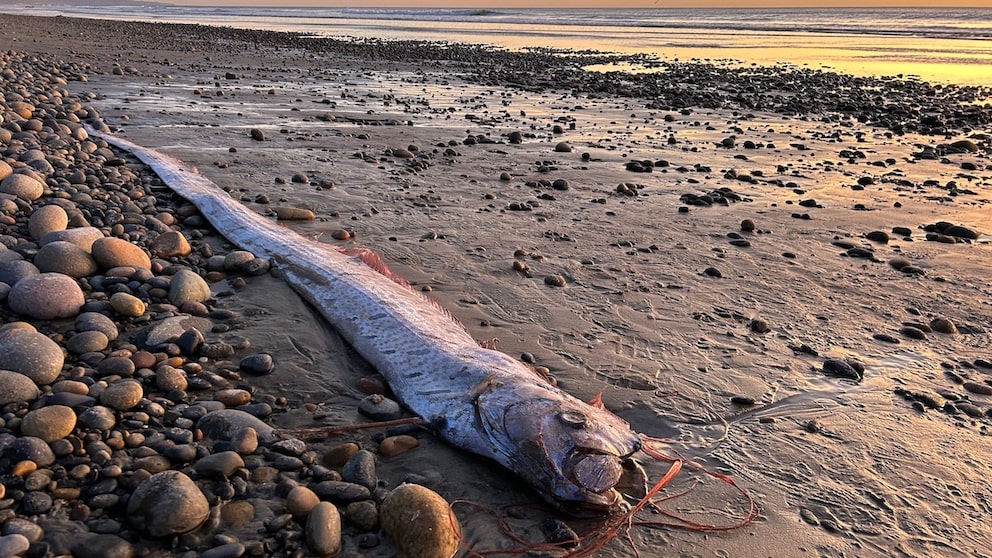February 20, 2025, 9:03 am | Read time: 3 minutes
A group of beachgoers in Mexico have now made a find that is as spectacular as it is memorable. They witnessed a still-living oarfish, often referred to as the ‘doomsday fish,’ being washed ashore. But that’s not all: the oarfish, often associated with omens of disaster, was exhibiting extremely unusual behavior. But what does it all mean?
It is an incident that beachgoers at Playa El Quemado in Baja California Sur will not soon forget. They witnessed a still-living doomsday fish wash up on the shore. It is an almost unique phenomenon, as this fish actually lives in the deep sea and is, therefore, never seen by humans — or, if it is, only dead. Such sightings of these rare animals are popularly associated with natural disasters. This is why this deep-sea fish also bears the dramatic name “doomsday fish” and is considered by many to be the “fish of doomsday.”
“It’s an Oarfish. Holy sh**, they’ve almost never been seen live”
Oarfish live at depths of up to 900 meters, grow up to nine meters long, and rarely make an appearance on the surface. If they do, it spells disaster for mankind — at least, that’s what the legend says.1 That’s why there was considerable excitement on the Mexican beach, as shown in a video filmed by eyewitnesses. “That’s an oarfish. Holy sh**, they’ve almost never been seen live,” a man can be heard exclaiming in the clip.
Moreover, as the video reveals, the fish is still alive and writhing — an absolute novelty. Until now, the sea creatures, which have hardly been researched, have only ever been spotted dead. “We put it in the water three times, but it came back every time,” says beach visitor Robert Hayes, describing the memorable situation. Several attempts were made to return the fish to the water, but the oarfish swam back to the beach each time. It almost seemed as though it was intentionally trying to strand itself on the shore.
“No one will believe this!”
“No one will believe me,” the man is heard saying as one of the beachgoers approaches the oarfish to take photos with it. “The first one I saw was 24 feet (about 7 m) long. They found it up to 30 feet (about 9 meters) long,” Men’s Journal quotes one of the eyewitnesses named Robert Hayes.
According to Hayes, the fish swam directly towards the group. The fish lifted its head about five centimetres out of the water, he describes the spectacular sighting. But what does this incident mean now? Especially in light of the fact that two of these fish were washed up dead in the USA just last year. Is this the end of us all?

Following a Rise in Beachings Marine Biologists Contradict Trump: “Wind Power Not to Blame for Whale Deaths

Hariotta avia Ghostly new shark species discovered in the deep sea

Like Moby Dick or Pinocchio Current Case! Can Whales Really Swallow Humans?
Is This the End of the World?
Ben Frable, head of the Scripps Oceanography Marine Vertebrate Collection, suspects a different reason. According to him, the surprising beaching of oarfish “is related to changing ocean conditions and the increasing number of oarfish in the vicinity of our coasts.”
“Many researchers have suspected that this is the reason why deep-sea fish are stranding on beaches. Sometimes it can be related to broader changes like the El Niño and La Niña cycles, but that’s not always the case,” the scientist categorizes it in an earlier statement.2


